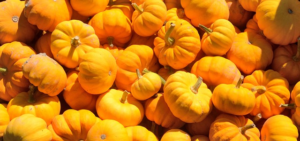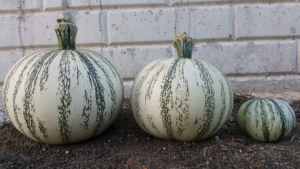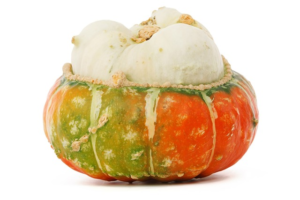
All summer, we enjoy our share of zucchini and summer squashes. Come autumn, we happily embrace their harder-shelled, densely-fleshed, sweet-tasting brethren. Like summer squash, mild-tasting winter squash welcomes bold flavor additions. Unlike summer squash, most winter squash varieties keep well for weeks, sometimes months, so fans can stock up at local farmers markets and produce stands.
There are dozens and dozens of squash varieties; it’s worth your time to get to know them. Acorn squash has long been an American staple, but it’s certainly not the most interesting flavor-wise. Three favorites — butternut, spaghetti squash and kabocha—can be found readily in large grocery stores. More exotic renditions, such as buttercup, red kuri, Hubbard and delicata, show up at farmers markets in early fall.
No matter what kind of squash you decide to try, select a squash that is heavy, rock hard and free of blemishes. When possible, choose squashes with their stems attached — these will keep the longest.
Once purchased, you’ll need to address peeling and cutting the squash. Not all squashes need to be peeled, but if they do, peel using a vegetable peeler, then switch to a paring knife to trim any stubborn bits before cubing.
If you are not peeling your squash, be careful! Cutting through the tough skin requires a sharp knife and some pressure. Make sure your cutting board is stable and keep your eyes on the knife. Cut the squash in half, then scoop out the seeds with a spoon. Set the cut side down to cut into wedges or smaller pieces. Enlist help to cut up the squash. The reward is delicious!
After the squash is peeled, cut or sliced, you can keep it in the refrigerator for three to five days. This makes weekday squash cooking doable for time-pressured cooks. You can freeze raw diced squash on a baking sheet until solid. Then scoop the frozen pieces into a freezer-safe bag and freeze for up to six months, so you can make fresh squash soups, stews and braises all year long. Cooked squash also keeps well in the refrigerator and can be frozen.
The flesh isn’t the only edible part of squash; the seeds can be rinsed, salted and slow-roasted in a 200 degree Fahrenheit oven, stirring often, for an hour or more, until crispy. They work great as a healthy desk snack or a crunchy addition to salads.
Note that most winter squash varieties are interchangeable in recipes with some subtle changes in flavor, though their yields will vary thusly:
– Kabocha: A 2 1/4-pound squash, peeled and seeded, yields 6 cups of cubes (about 2 pounds)
<…….






